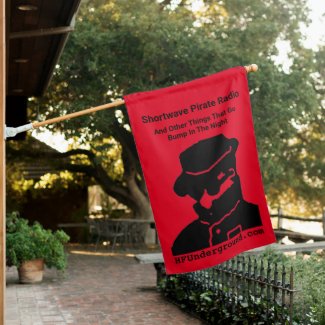Hello Graham,
Yes, this signal has been noted on these forums as well as others. A couple of points to add to your post. I have a video up on my Youtube channel of it on Jan 1, 2018, in the 40 meter band.
Video here, ignore the part of me calling the pulse "about 20 msec long", I was rounding for description, not trying to measure the exact pulse width, which is, as you said, about 16 msec long. But the leading edge to leading edge timing is correct.
https://www.youtube.com/watch?v=mSP8pHtqOd4The signal has appeared on up to 5 frequencies in sequence, and it has been seen on as few as one frequency during a given time period. When on multiple frequencies the frequencies are not transmitted simultaneously, but rather they are sequenced, freq 1, then freq 2, then freq 3, then freq 4, and back to freq 1 to restart the cycle.
Assuming the first pulse, when multi freq, or when single freq the only pulse, is synced to start at UTC T0, or at the start of the UTC second, then the distance is about 2750 km from my location in the Mojave Desert of California. Or roughly on the following green circle:

Now, if we could overlay your circle, my circle, and a third parties circle we might narrow down the location a bit. Better yet, instead of assuming the pulses start at UTC T0 we could just use TDOA and arrive at a location regardless of true start time of the pulse.
You have to be careful with that assumption of start of pulse timing. While the first pulse sent may, or may not, start on UTC T0, the other pulses, when in multi freq operation, have some kind of delay in them. Each pulse is, as you said, 16 msec long, so you would expect P1 (pulse 1, or freq 1) to be at UTC T0, P2 (pulse 2, or freq 2) at T0 +16 msec, P3 to be at T0+32 msec, P4 to be at T0+48 msec, etc.
But what really appears to happen is that each following pulse is delayed by the pulse width plus some time delay. So the P1 starts at T0, the P2 at T0+40 msec, P3 at T0+80 msec, P4 at T0+120 msec. The following pulse is sent with the pulse duration delay of the proceeding pulse, 16 msec, plus a delay of about 24 msec.
What is odd about this signal, to me, is the fact it appears to only happen in ham bands (so far I have only seen it in 40 and 30 meters) but it appears to not be ham related and appears to be running well over ham power levels. I have simultaneously heard it (using remotes) from the western Pacific to Eastern Europe, on 40 meters. Not impossible at ham power levels, but not normal either.
T!



